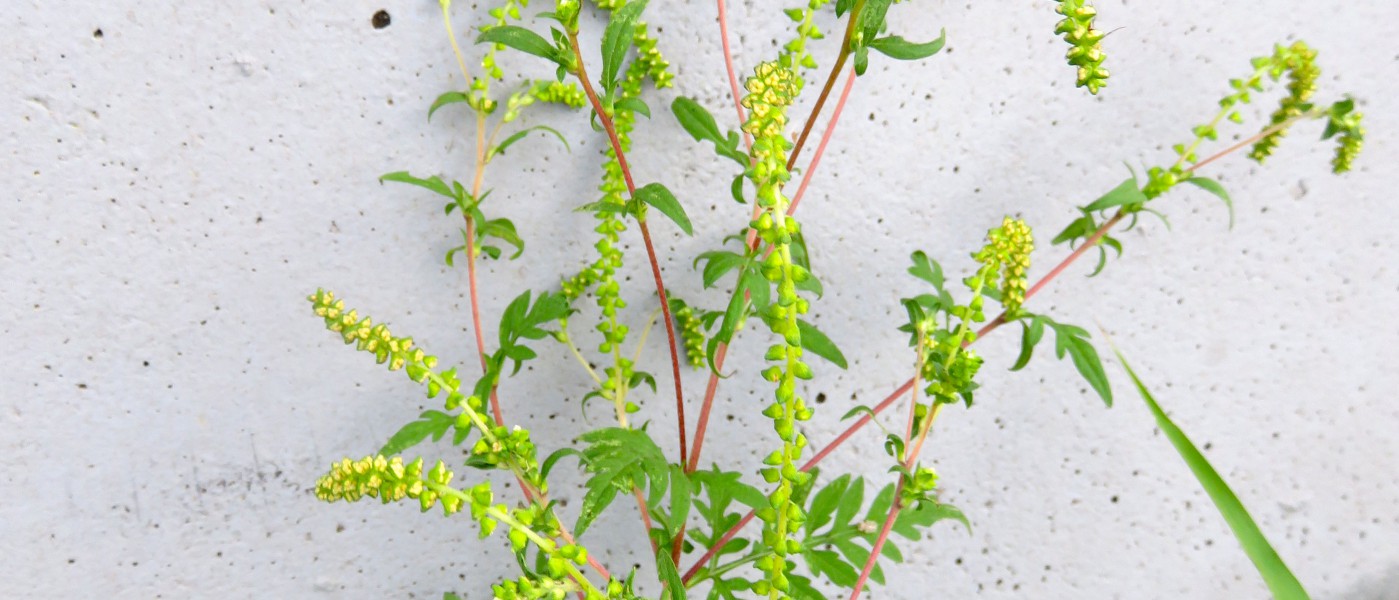Weed of the Month: Ragweed
Anyone with fall allergies—like me—should learn to spot the worst villain of all superweeds: ragweed! The main cause of hay fever, this annual beast can produce one billion grains of pollen per plant. Ragweed pollen causes familiar allergy symptoms like sneezing and watery eyes, and to make matters worse, it can also scratch up your respiratory system due to the spiny surface of the grains. Ragweed may also cause “oral allergy syndrome,” wherein the body confuses the proteins in fruits like cantaloupe and tomato with the proteins found in ragweed pollen, triggering an allergic reaction to those foods. This “cross-reactivity” makes many people mistakenly think they have a food allergy. Ugh.
There are more than a dozen species of ragweed in North America, but Ambrosia artemisiifolia is the most widespread. Common ragweed's lacy leaves are a deep green and resemble those of various Artemisia species, hence the specific epithet, artemisiifolia. This native plant prefers moist soils and produces long, greenish-yellow flower spikes, called racemes. Termed a “short-day” plant, it starts flowering in late summer as the sunlight begins to wane, and it’s not killed off until the first frost of fall. Thanks to climate change, this window is widening, and ragweed season is getting longer. Ragweed pollen can travel more than 400 miles by wind (and seems to head straight up my nose). Frequent mowing coupled with dry conditions seems to keep ragweed at bay, though its seeds can lay dormant in the soil for up to 80 years!
How could a plant genus with the name Ambrosia be such a bane to society? It hasn't always been so. Archaeological evidence from Native American settlements suggests that some ragweed species were actually cultivated for their abundant, protein-rich, high-fat grain. Eventually, however, maize supplanted ragweed as the main grain crop. This notorious plant has at least one other redeeming quality: Its fibrous roots can absorb high amounts of lead from the soil, making it one of the best plants for phytoremediation—the use of plants to mitigate pollution.
Migratory birds exploit its late-forming seeds as a fall food source. Resident birds and other wildlife like voles and chipmunks also supplement their winter diet with the seeds—ragweed is one of the few plants tall enough to poke out above snowdrifts. Furthermore, a whopping 220 insect species have been found to feed on its foliage, including beetles, treehoppers, and caterpillars. So, if you believe the divine is in all living creatures, then this plant indeed lives up to its name as the food of the gods.


